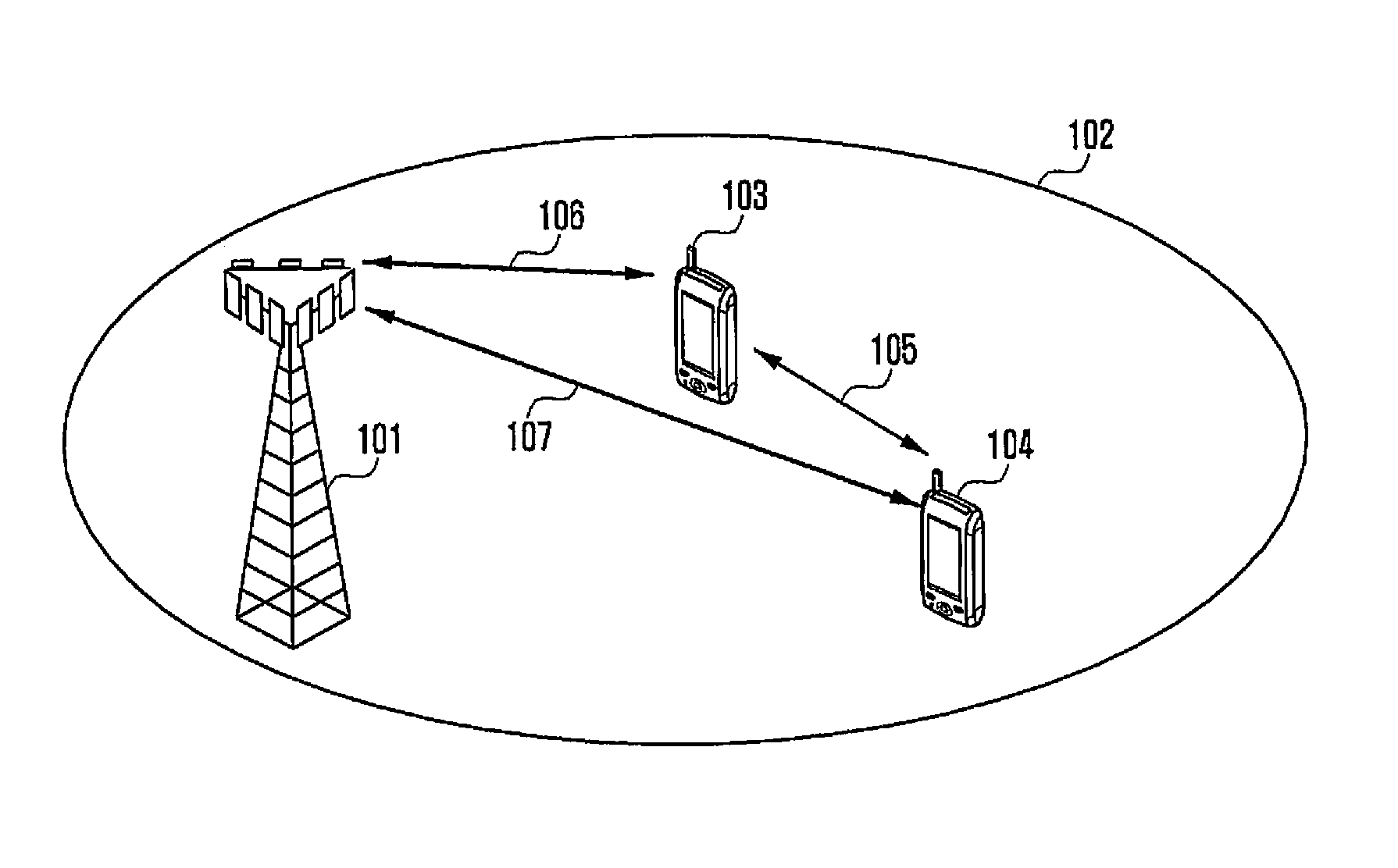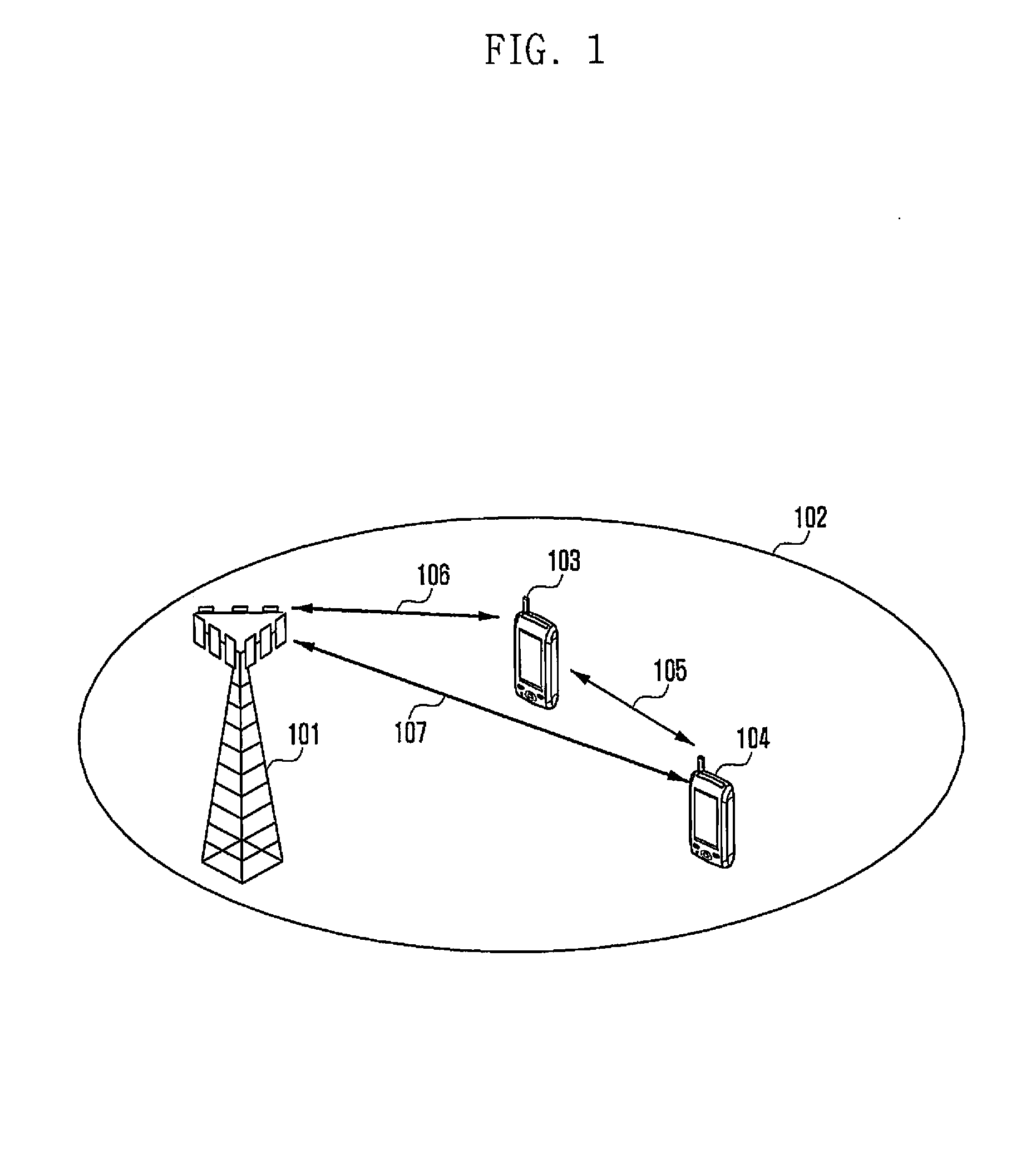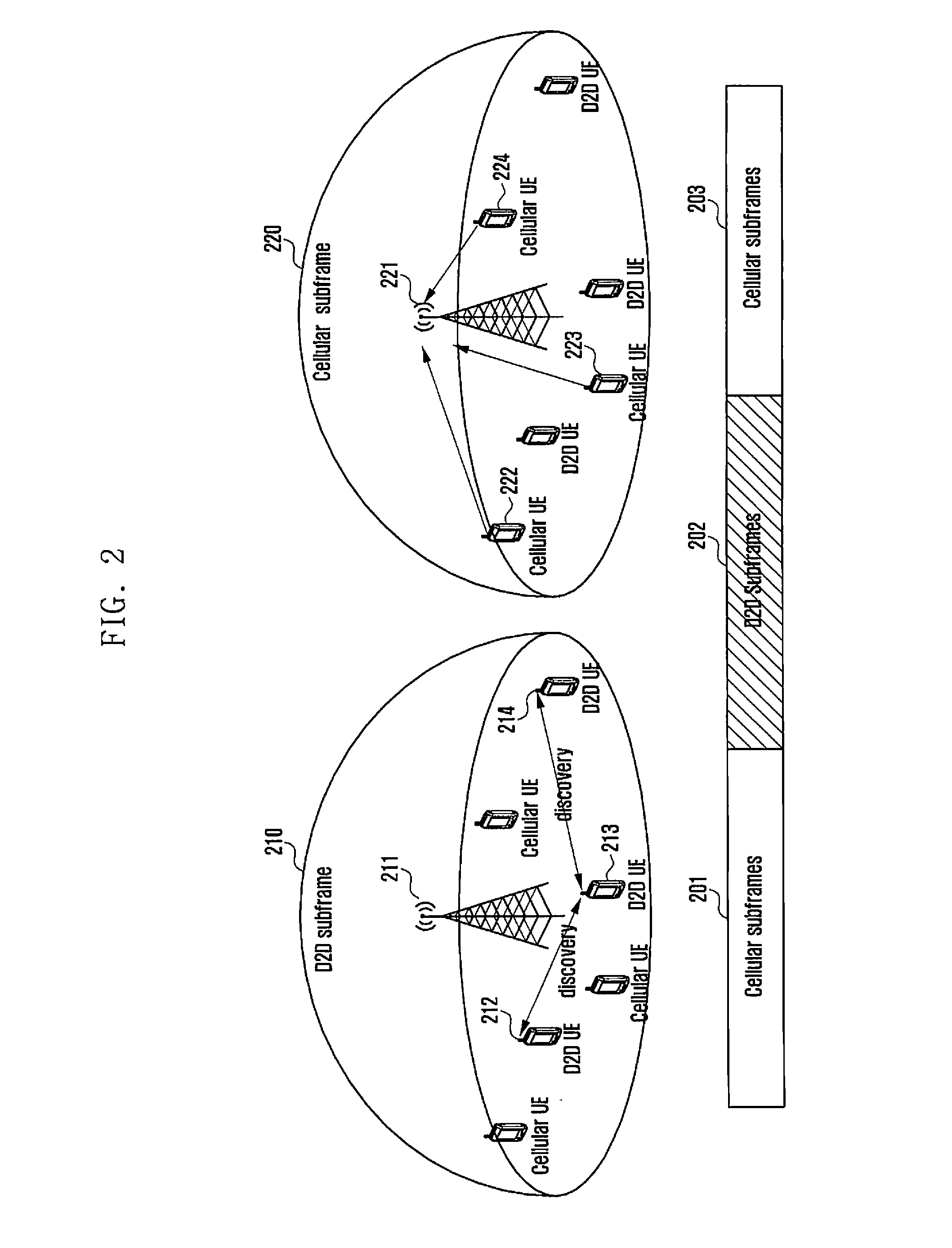Method and device for transmitting device-to-device discovery signal of terminal between base stations in wireless cellular communication system
a wireless cellular communication and discovery signal technology, applied in the field of wireless mobile communication system, can solve the problems of degrading the receiving sensitivity of d2d ue and of cellular ue in the system, and achieve the effect of minimizing interference with wireless cellular communication
- Summary
- Abstract
- Description
- Claims
- Application Information
AI Technical Summary
Benefits of technology
Problems solved by technology
Method used
Image
Examples
first embodiment
Serving eNB
[0056]The first embodiment of this invention will address a method by which serving eNB controls the strength of a discovery signal of D2D UE. Specifically, the first embodiment suggests a method in which serving eNB (or a serving cell) controls, through a power control of D2D, the strength of a discovery signal of D2D UE located near neighboring eNB (or a neighboring cell) performing cellular communication such that the discovery signal may not affect the performance of cellular communication in the neighboring eNB. The first embodiment will be described with reference to FIG. 4.
[0057]In FIG. 4, the eNB 401 allocates current subframe for a D2D discovery signal, and the eNB 411 allocates the same subframe for cellular communication. Therefore, D2D UEs 402, 403 and 404 that belong to the eNB 401 transmit discovery signals using predetermined time-frequency resources according to a discovery signal transmission procedure and also receive such discovery signals from other UE...
second embodiment
Neighboring eNB
[0092]Contrary to the first embodiment in which a power control for a D2D discovery signal is performed using information signaled by the serving eNB, the second embodiment of this invention suggests a method by which the UE directly receives information from the neighboring eNB and performs a power control for a D2D discovery signal.
[0093]FIG. 7 is a diagram illustrating a network according to the second embodiment of the present invention.
[0094]In FIG. 7, the eNB 701 allocates current subframe for a D2D discovery signal, and the eNB 711 allocates the same subframe for cellular communication. Therefore, D2D UEs 702, 703 and 704 that belong to the eNB 701 transmit discovery signals using predetermined time-frequency resources according to a discovery signal transmission procedure and also receive such discovery signals from other UEs.
[0095]At this time, the D2D UE 704 is located at the boundary between two eNBs 701 and 711, so that there is a possibility that a D2D di...
third embodiment
Transmission Using Overlap Part of D2D Subframe between Cells
[0119]Methods suggested through the first and second embodiments are to solve a problem of the degradation of reception performance in cellular communication by performing a power control for D2D discovery signal transmission of UE in case a serving cell is set to D2D discovery and also a neighboring cell is set to cellular communication.
[0120]As discussed above, D2D resources and cellular resources are multiplexed by means of TDM scheme. Even though cells have different settings, a certain overlap of D2D resources may occur on the time axis. Therefore, if UE located near a neighboring cell transmits a D2D discovery signal by using subframe defined as D2D resources in both cells, it is possible to remove influence of the discovery signal on cellular communication. The third embodiment to be discussed hereinafter corresponds to this case.
[0121]UE that belongs to a serving cell selects one discovery signal resource from the ...
PUM
 Login to View More
Login to View More Abstract
Description
Claims
Application Information
 Login to View More
Login to View More - R&D
- Intellectual Property
- Life Sciences
- Materials
- Tech Scout
- Unparalleled Data Quality
- Higher Quality Content
- 60% Fewer Hallucinations
Browse by: Latest US Patents, China's latest patents, Technical Efficacy Thesaurus, Application Domain, Technology Topic, Popular Technical Reports.
© 2025 PatSnap. All rights reserved.Legal|Privacy policy|Modern Slavery Act Transparency Statement|Sitemap|About US| Contact US: help@patsnap.com



